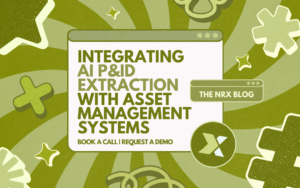According to PwC, predictive maintenance enabled by AI can reduce operational costs by up to 30% and cut unplanned downtime by as much as 45%. These outcomes are not future projections. They are being realized by organizations that have embraced AI-powered Computerized Maintenance Management Systems (CMMS).

What Is AI for CMMS?
AI for CMMS refers to the integration of artificial intelligence technologies into maintenance management platforms. Traditional CMMS systems focused on scheduling and logging work orders. However, with AI, these systems now process large volumes of data to uncover patterns and provide insights that guide more effective maintenance decisions. Artificial intelligence, as defined by IBM, refers to the use of machines to replicate human intelligence in a way that allows systems to operate with increasing autonomy and sophistication.

Key Benefits for Maintenance Teams
One of the most immediate benefits of AI-driven CMMS is automated decision-making. Maintenance teams no longer need to sift through endless logs and spreadsheets. Instead, AI analyzes sensor data and historical work orders to suggest when and where to focus their efforts. This shift has moved maintenance strategies away from reactive approaches toward more proactive and preventive practices.
Additionally, AI enhances asset lifecycle management. By tracking machine performance in real-time, AI can estimate the remaining useful life of each asset. This prevents over-maintenance and avoids premature asset replacement, both of which can be costly.
Industry Trends and Real-World Applications
Across sectors, AI in CMMS is redefining what’s possible. In the transportation sector, AI is being used to monitor rail systems, predicting component failures before they cause delays. A key example is the London Underground’s collaboration with AI startups, which helps anticipate part replacements weeks before any physical failure occurs while also enhancing their existing surveillance system.
In the energy industry, predictive maintenance powered by AI is helping monitor turbines and substations. According to McKinsey, predictive maintenance can lower maintenance costs in this sector by 20% to 30%.
Furthermore, AI is improving safety compliance. In facilities where regular inspections are critical, AI-assisted image recognition can automatically verify safety compliance through visual checks. This reduces human error and shortens the time required for manual audits.
Conclusion
AI is more than just an enhancement to existing CMMS platforms. It marks a fundamental shift in maintenance management. With lower costs and longer asset lifespans, organizations that implement AI for CMMS gain a clear competitive advantage. The future of maintenance has arrived, and it is becoming increasingly intelligent.
Integrating AI P&ID Extraction with Asset Management Systems
ISO 14224 vs Other Maintenance Standards: What Sets It Apart?
Building Trust in Your Asset Data: Strategies for Governance
Share this article




